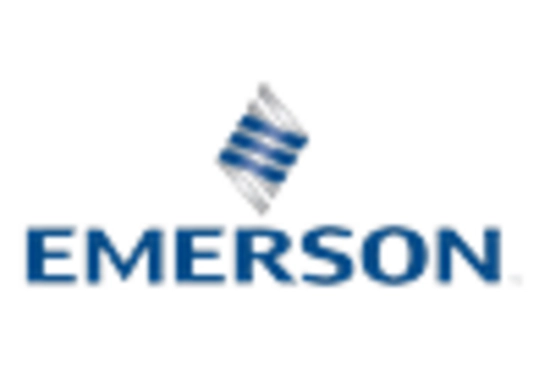Expansion of Industrial Automation
The ongoing expansion of industrial automation is likely to significantly influence the Frequency Converter Market. As industries increasingly adopt automated processes to enhance productivity and reduce labor costs, the need for precise control of motor functions becomes paramount. Frequency converters are essential in providing the necessary control over motor speed and torque, which is vital for automated systems. Recent statistics suggest that the industrial automation market is expected to reach a valuation of over 300 billion dollars by 2026, indicating a substantial opportunity for frequency converter manufacturers. This growth in automation not only drives demand for frequency converters but also encourages innovation in their design and functionality, thereby shaping the future landscape of the Frequency Converter Market.
Rising Demand for Energy Efficiency
The increasing emphasis on energy efficiency across various sectors appears to be a primary driver for the Frequency Converter Market. As industries strive to reduce operational costs and minimize energy consumption, the adoption of frequency converters becomes more prevalent. These devices facilitate the optimization of motor speed and torque, leading to enhanced energy savings. According to recent data, the market for energy-efficient technologies is projected to grow at a compound annual growth rate of approximately 8% over the next five years. This trend indicates a robust demand for frequency converters, as they play a crucial role in achieving energy efficiency goals. Consequently, manufacturers are likely to invest in innovative frequency converter solutions to meet this rising demand, thereby propelling the Frequency Converter Market forward.
Growth in Renewable Energy Integration
The integration of renewable energy sources into existing power grids is emerging as a significant driver for the Frequency Converter Market. As nations strive to transition towards sustainable energy solutions, the need for efficient energy conversion becomes increasingly critical. Frequency converters facilitate the connection of renewable energy sources, such as wind and solar, to the grid by converting variable frequency outputs into stable, usable power. Recent reports indicate that the renewable energy sector is projected to grow at a rate of 10% annually, further underscoring the demand for frequency converters. This growth not only enhances the reliability of renewable energy systems but also positions frequency converters as essential components in the evolving energy landscape, thereby propelling the Frequency Converter Market.
Increasing Adoption of Electric Vehicles
The rising adoption of electric vehicles (EVs) is likely to serve as a catalyst for the Frequency Converter Market. As the automotive sector shifts towards electrification, the demand for efficient power conversion systems becomes critical. Frequency converters are essential in managing the power supply to electric motors, ensuring optimal performance and energy efficiency. Recent projections suggest that the electric vehicle market could reach a valuation of over 800 billion dollars by 2030, highlighting the substantial growth potential for frequency converters in this sector. This trend not only drives demand for frequency converters but also encourages manufacturers to develop specialized solutions tailored for the automotive industry, thereby shaping the future of the Frequency Converter Market.
Technological Advancements in Power Electronics
Technological advancements in power electronics are poised to drive the Frequency Converter Market significantly. Innovations in semiconductor materials and circuit design have led to the development of more efficient and compact frequency converters. These advancements enable higher performance levels, reduced energy losses, and improved thermal management. As industries seek to enhance their operational efficiency, the demand for advanced frequency converters is likely to increase. Market analysis indicates that the power electronics sector is expected to witness a growth rate of around 7% over the next few years, suggesting a favorable environment for frequency converter manufacturers. This trend indicates that the Frequency Converter Market will benefit from ongoing technological improvements, fostering a competitive landscape that encourages further innovation.

















Leave a Comment